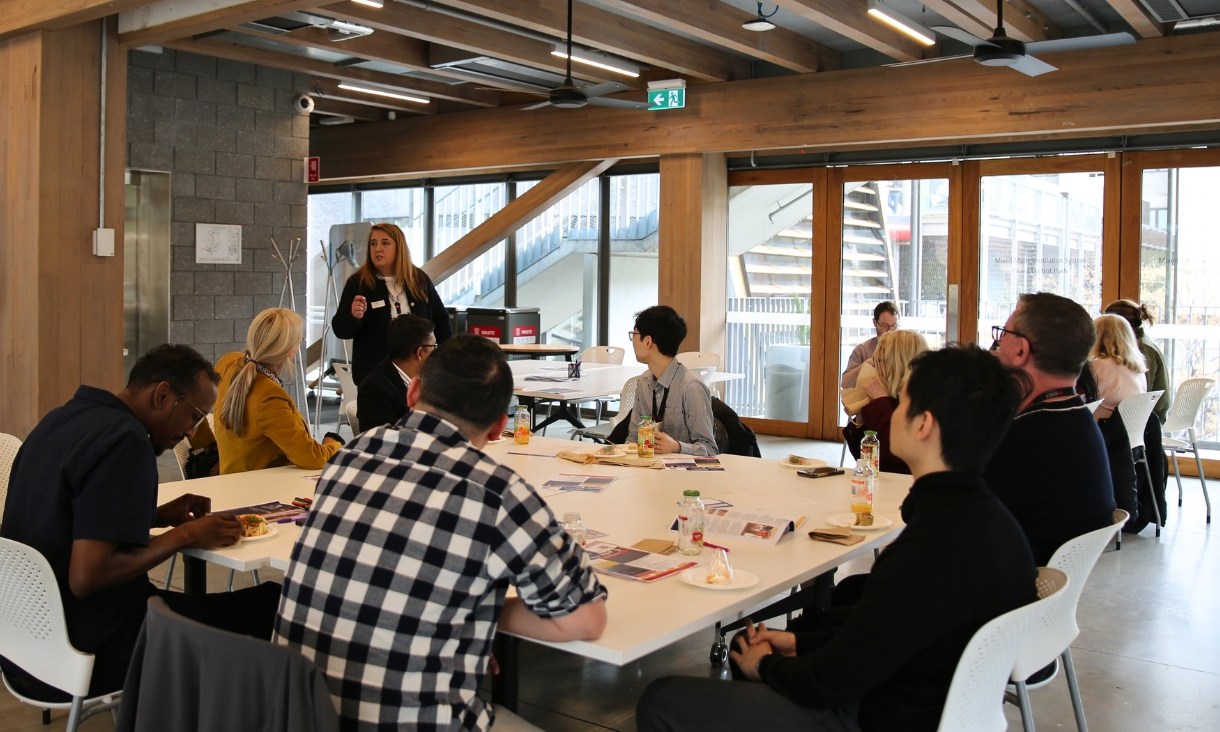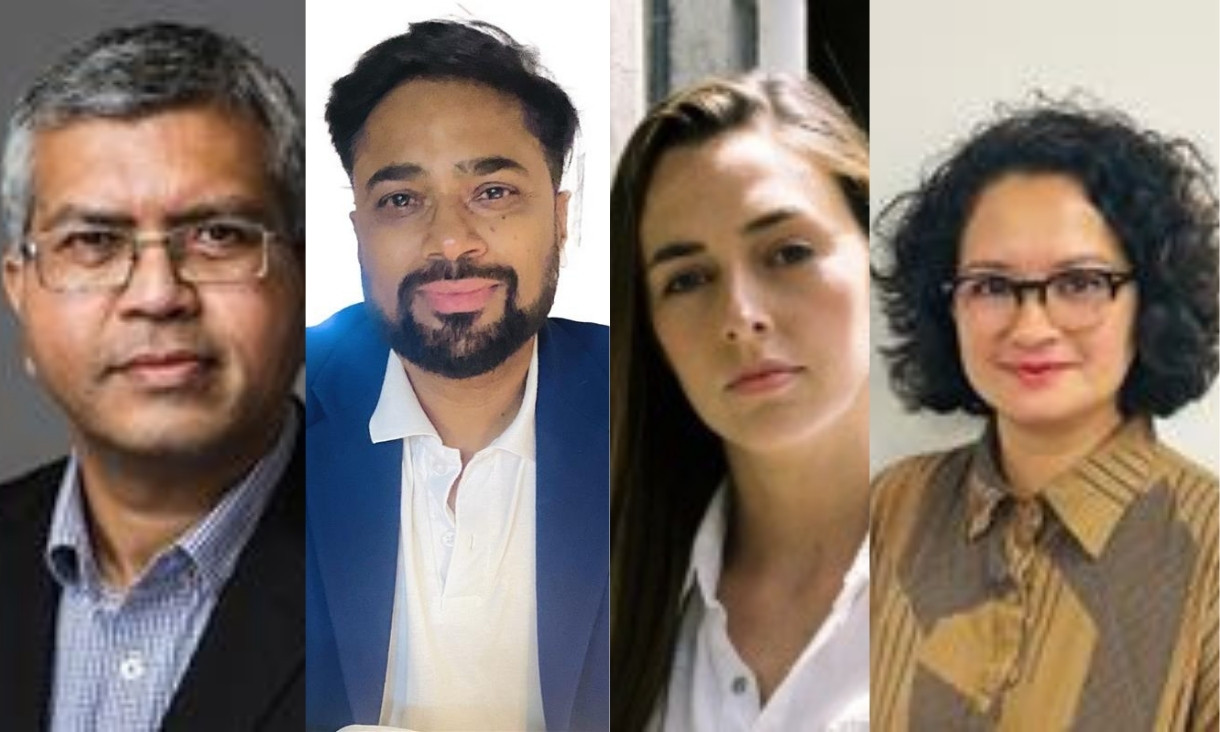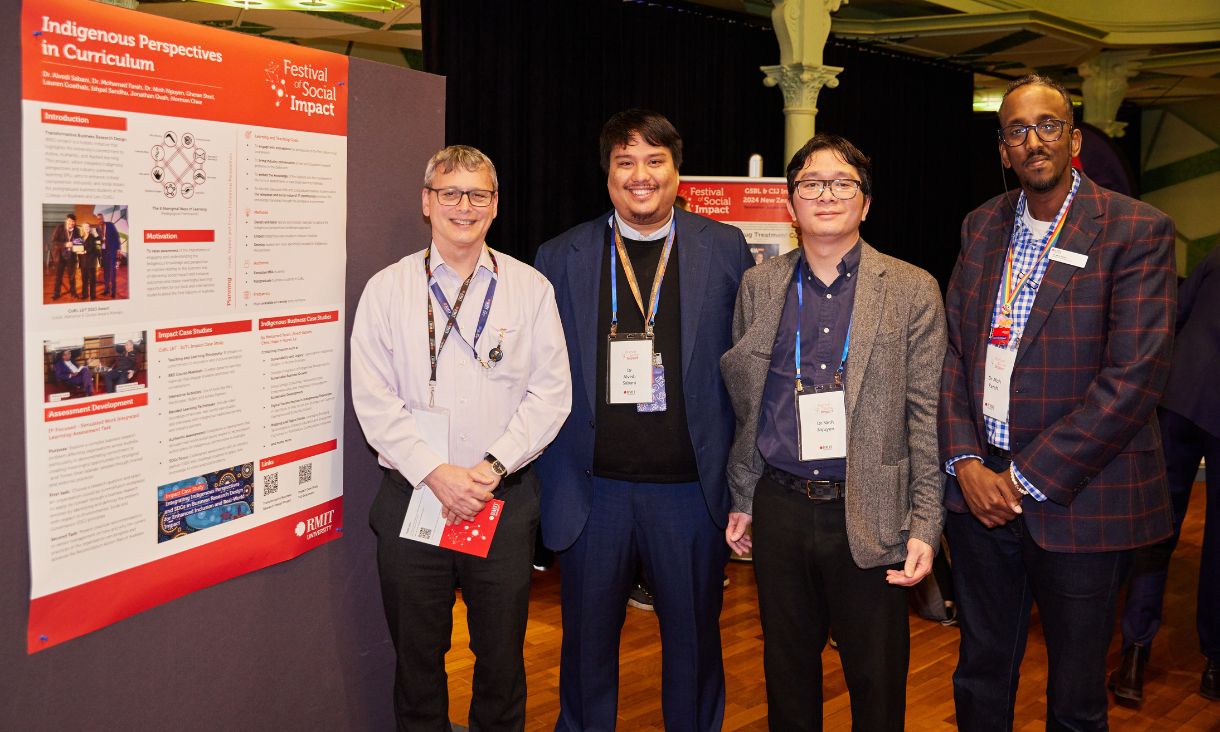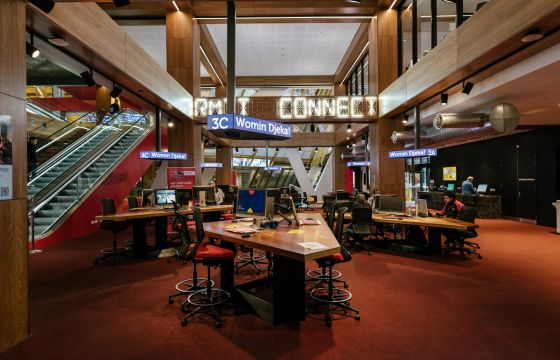What sparked this exploration into the role of creativity in your teaching?
This journey began roughly seven years ago through my teaching and observation research in critical pedagogy. I found that businesses were calling out for graduates that had complex problem-solving skills, and when asked, any global or medium level engineering technology company identifies the biggest gap in engineering professionals as the capacity to integrate knowledge. University programs deliver a range of expertise levels and skills across departments, but when engineering professionals' step into senior management roles, they require the ability to work across various disciplines, synthesize information, see the bigger picture, and essentially, translate complexity into simplicity.
In the process of my research in critical digital pedagogy, presenting to and consulting with global businesses, I arrived at the conclusion that at a minimum, postgraduate level students must be equipped with better problem-solving skills, along with the ability to work across various disciplines. I could see that our students were developing applied, technical skills such as drafting, calculations, spreadsheets but were not cultivating creative and critical thinking skills. One of the gaps I recognised in our pedagogical practice was specifically around the cultivation of creative thinking. It was not a part of the curriculum, yet it is a necessary skillset that enables technical, engineering or science people to solve complex and multifaceted problems, and filter and translate innovations into commercial outcomes (i.e., entrepreneurial skills).
How did you go about changing this with your Masters of Engineering students on a practical level? How does one begin to facilitate the development of creative thinking in one’s teaching?
I considered the notion of teaching creativity. The obvious approach was to design activities that would assist students in developing creative thinking, for instance, to actively engage in conversation with other students and the course coordinator in class. This is not always easy to do as it must be a “provocative topic” for discussion. Generally speaking, the pedagogical shift away from “banking knowledge” into students, to co-creating knowledge in class is not always an easy shift. It requires not only changes to one’s teaching approach, but adjustments in curriculum design and academic culture.
The post graduate course, Building Quality Organisations and Leadership became a testing ground for new pedagogical practices. Integrating the concept of “creative destruction” was also a challenge for me, which pushed me to seek a different approach to teaching.
When I started developing this course, I felt it was extremely important for managers to understand the concept of creative destruction. The ability to deliberate on themes and topics, not just as a philosophical concept but as it applies to society, culture, art, technology, and human evolution as a whole. At the same time, I found it very hard to teach this concept in the classroom, that is how I ended up taking my students to the NGV.
I first approached the NGV six or seven years ago. I met with a senior art curator and asked if they would be interested in working with me. I was exploring the idea that society and business are integrated and unified, that knowledge has no boundaries and what affects one also affects the other. When great changes affect society, businesses frequently collapse because people are not able to see the associations and adapt to the changes outside of an organisation. I asked if it was possible to explore these ideas and deliver this kind of lecture tour through art exhibitions and art history while linking it to technology and innovations as well as considering the impact of technology on social change and vice versa.
Each lecture tour at the NGV required a lot of time to prepare, to work together with the NGV and explore the thinking underpinning creative destruction. In collaboration with the NGV’s senior curator, we developed a list of group activities and questions for students with a focus on active learning occurring for the students and ensuring it is an enjoyable and engaging time for them. It became a highly productive association, and we progressed quite a long way with these lecture tours.
When you speak about creative thinking and the process of exposing students to creative destruction, do these sessions help to draw connections between aspects and ideas that students may not normally consider? Are the NGV visits a way then of exploring the connectivity between society, art and creative thinking?
Yes precisely.
On our tours at the NGV, the senior curator would guide students to different areas and talk about various exhibits and artworks topics and themes. These would intersect with the same concepts that they had been learning about in class but would then be able to consider in a different context. Our hope was that they start to become emotionally connected to the stories behind the art works.
The timing of these sessions was critical. If the NGV sessions occurred too early in the semester, students would just be confused. The sessions were precisely timed during the part of the semester that aligned with the associated delivery in the curriculum. Students were then able to progress sufficiently with the semester’s work and engage with and discuss the knowledge and information through a range of contexts.
In these sessions, the engagement levels were high, and students had lots of stories and associations that they shared. You could observe the cultural and social aspects of their backgrounds in their responses. The discussions were often quite sophisticated as they looked at big themes and topics, such as significant changes like social changes, economic changes, technological changes. Students frequently come up with ideas on how to solve certain economic and social problems, and so on. This kind of big picture thinking was very much part of their dialogue as they considered problem solving solutions.
How do students explore problem solving? What does that look like?
I devised a set of questions for a group activity, I sent this through to the curator and she made suggestions about which exhibitions and which section/s of the NGV we should visit. We then placed students in an environment within the gallery and it might have been related to a topic or content that we explored in class. For example, an environmental issue, an aspect of technology or human rights such as women sparking feminism etc.
Students would then listen, look and then be provided with the opportunity to share their own stories. That has probably been the most amazing part of this journey – students relating the discussions to their life and their personal experiences. For example, students from various cultural backgrounds offered quite different reflections on the same event. I generally observed on the side and at this point. The questions were posed as to the ways in which they could deal with the problem or issue. This could become quite a complex discussion, for example a problem that initially was based in Africa can also apply to many areas of the world, (bushfires for example).
So your role is mainly remaining on the side to guide and facilitate the process?
Yes. The topics were linked to course content, so it enhanced the learning of the concepts that were discussed in the course. The creative destruction concept became a teaching tool for learning how to navigate a complex economic, social, political and business environment, learning to observe how new things emerge and dispose of the old. This is especially important for engineering managers as they are responsible for providing stability and leadership in an organisation, while at the same time pressing for change and communicating a shared vision for how to move forward.
It was very much student led as it grew from their conversations. The main objective was to get students talking and making connections as they try to consider how organisations and businesses productively relate to external circumstances and environmental issues. When I observed these students opening up and discussing these larger themes, it was very powerful. The senior curator frequently commented that she had not expected these sessions to be so successful.
Once you have been to the NGV and the students have engaged in these discussions, how does that then relate to their assessment tasks and the course curriculum?
Throughout the semester they were undertaking their assessments, and in this specific course, the students were required to synthesize different ideas and information and create presentations as either groups or individually. The lecture tour was a celebration at the end of the course, a time for reflection and group conversations.
In the first two or three years of running this lecture series, I saw how much the students were enjoying these sessions and were beginning to open themselves up. In particular, I observed that they were responding with complex thinking. This translated to improved outcomes in their assessments. It allowed them to express themselves and gain more confidence in their expression and exploration of ideas and solutions. I call it “unseeing forces of Goodness”.
I wonder if you could speak about students who might have limitations with language and literacy. How do these students engage and respond to the NGV sessions?
All of the students engaged and many in fact took time off to attend these sessions. Ninety percent of my cohort are international students, but this did not impede the process. Quite the opposite in fact because students learnt about different cultural values and belief systems and explored underpinning assumptions which are a result of the constructed social reality, history, geography that each culture incorporates. There was also strong diversity in age with some being mature age and others being younger, and there were domestic students all mixed in together. This created a very rich environment for all, something perhaps students could not learn in the classroom.
The cultural intelligence concept is also hard to teach in classroom, it is a lifetime learning for many, but the lecture tours at the NGV were just perfect for it.
Would you say that social learning is part of the strength of this process?
Yes, this teaching approach was absolutely aligned here with social learning. Social learning is the process whereby students become actively involved in the developing of mutually acceptable solutions for problems or decisions that affect their community or company. The social learning approach can be broken into two components – cognitive enhancement and moral development. Cognitive enhancement involves participants gaining technical competence and learning about collective values and preferences. The second component, moral development involves the ability for individuals to make judgements about right and wrong outside of self-interest, the ability to take on the perspective of others, developing moral reasoning and problems solving skills, learning how to integrate new cognitive knowledge into your own opinion. Learning how to cooperate with others to solve common problems.
Do your alumni come back to you and let you know that this is useful for them in the current practice?
So, this is interesting given that we are talking about engineers.
I remember one student from the Master of aviation who was also indigenous. He went on a project to the Northern Territory, and he sent an email saying, “I just feel I can do much more – I can understand more. I’m not afraid to ask questions.” The program helped to build his self-esteem gave him the ability to be connected to something bigger than himself.
This touches on aspects of leadership, confidence and self-esteem: taking risks and leading others.
Frequently people think that art does not apply to engineering or managers. Students often have imposter syndrome or thoughts that they are not good enough, not creative. You can smash this perception by taking them to the NGV to learn very practical but also complex ideas.
From the feedback I receive, when students think back on their experience at university, this experience is frequently a highlight. We need more of this creative kind of practice; it does not have to incorporate lecture tours at the NGV. Companies like Ford and Boeing, they are looking for students that can add value, invent something for them, it's not just about formulas and teaching hydraulics. We need to think about the moral development of all students. Fostering creativity and critical thinking skills is the first step towards this new pedagogical practice for emerging the digital economy.
We need to continue this conversation and to have this more widely embedded in our curriculum, taking perspective and experience from various disciplines.
Story by: Naomi Herzog, Senior Education Practice Specialist in the Centre for Education Innovation and Development, RMIT University.






